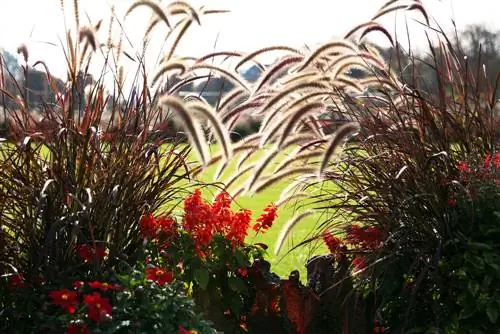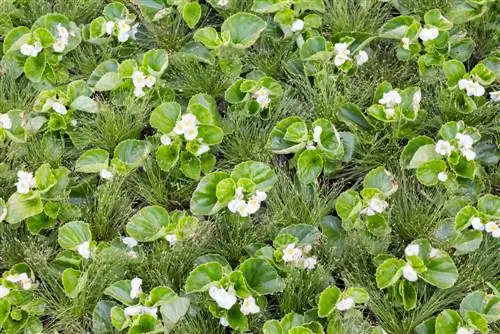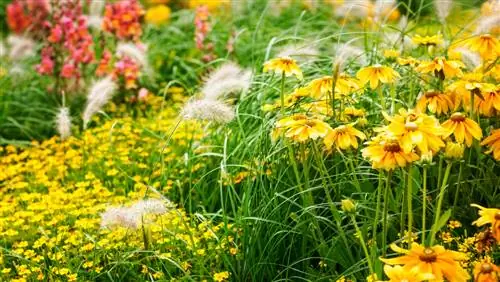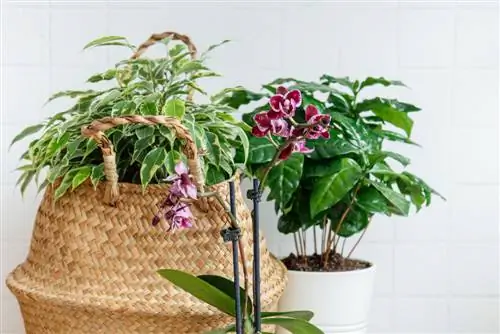- Author admin [email protected].
- Public 2023-12-16 16:46.
- Last modified 2025-01-23 11:22.
The world of grasses is almost unmanageable. They are considered the perfect companion plants for all kinds of plants, close gaps in their elegant way and provide style in the garden. How do you combine them correctly?
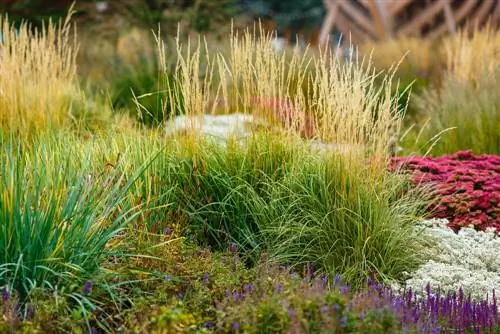
How do you combine grasses correctly in the garden?
When combining grasses in the garden, the stalk color, flowering time, location requirements and growth height should be taken into account. Grasses go well with roses, hydrangeas, lavender, asters and other perennials. Pay attention to suitable locations and harmonious color compositions.
What factors should you consider when combining grasses?
So that the grasses come into their own in the combination, you should consider the following factors when designing:
- Stalk color: green, blue-green, red, yellow or silver gray
- Flowering time: May to August
- Location requirements: sunny to partially shaded, sandy and well-drained soil
- Growth height: up to 250 cm
Small grasses are best combined with low perennials. Large grasses, on the other hand, are more suitable for combinations with tall perennials and trees. Depending on the height, the grasses should find their place either in the foreground or background of a bed.
Most grasses prefer a sunny location. Only a few specimens prefer to grow in the shade. Choose companion plants for the grasses that meet their site requirements so that the interaction benefits everyone.
During the flowering period and throughout autumn and winter, grasses with their long panicles or spikes decorate the landscape. They are therefore particularly beneficial with magnificent perennials that are in bloom in late summer or autumn.
Combine grasses in the bed or in the bucket
Higher grasses such as pampas grass or miscanthus have an impressive long-distance effect in the bed. You can place colorful perennials and low trees in the foreground. Smaller grasses such as feather grass and blood grass blend impressively alongside small perennials such as cushion asters and sedums.
harmonize perfectly with grasses, among others:
- Roses
- hydrangeas
- Bamboo
- Ferns such as worm fern, ostrich fern and spotted fern
- Lavender
- Asters
- Coneflower
- Anemones
Combine grasses with lavender
Both most grasses and lavender like sunny and rather dry locations. Plant tall grasses behind a group of lavender and plant short grasses up to 50 cm high right next to several lavender plants. In mid and late summer, the interplay between the violet flowers of lavender and the more subtly colored panicles of the grass is impressive.
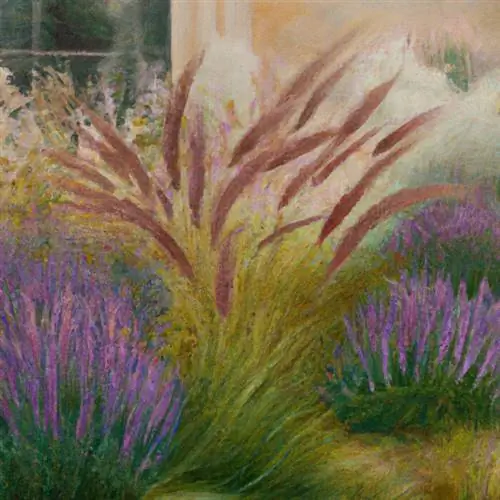
Combine grasses with hydrangeas
Hydrangeas go well with grasses that are higher than themselves. It is also important that the respective grasses prefer a partially shaded location, as the majority of hydrangeas do not feel particularly comfortable in the blazing sun. Whether pink, white or blue hydrangeas is up to your taste.
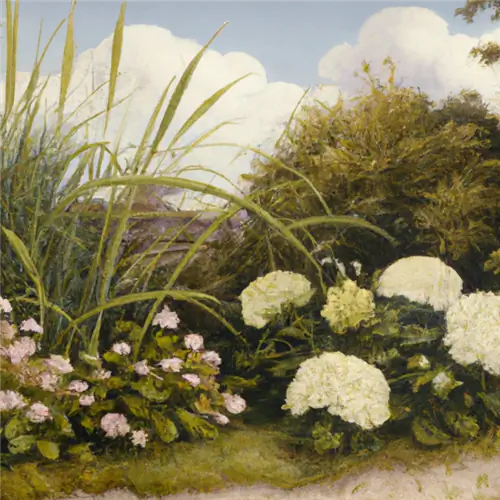
Combine grasses with roses
Roses often appear rather strict and dimensionally stable. Grasses in company with roses provide a pleasant loosening up. They play around the tight rose shoots and large flowers in a lovely way and, with their mostly lighter color, form a pleasant balance to the bright colors of the roses.
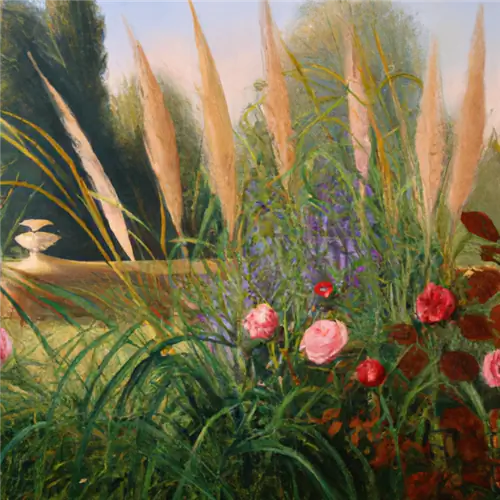
Combine grasses as a bouquet in the vase
The flower stalks of numerous grasses are ideal for cutting vases. With them in your luggage, you can visually enhance all bouquets of flowers and make them appear a little more playful. For example, surround pink autumn anemones and white roses in the bouquet with bright spikes of switchgrass or pennisetum.
- Roses
- Asters
- Dahlias
- Chrysanthemums
- Autumn Anemones
- Phlox


